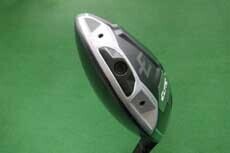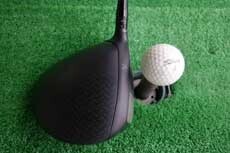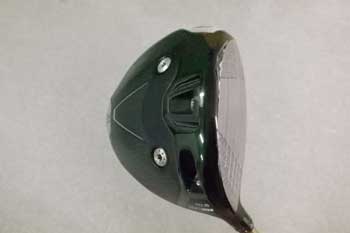- 1 Test Review: Callaway ELYTE Driver
- 2 Callaway ELYTE Driver Review (2025 Edition): Unmatched Distance Meets Unparalleled Forgiveness
- 3 Introduction: Why the Callaway ELYTE Driver Matters in 2025
- 4 Point: The Core Appeal of the ELYTE Driver
- 5 Reason: What Makes It So Effective?
- 6 Example: Test Results and Real-World Feedback
- 7 Pros and Cons
- 8 Who Should Play the ELYTE Driver?
- 9 Performance in Context: ELYTE vs. Other Callaway Drivers
- 10 Final Verdict: Is the Callaway ELYTE Worth It in 2025?
- 11 FAQs: Callaway ELYTE Driver
- 12 Conclusion: Should You Buy It?
- 13 Source:
Test Review: Callaway ELYTE Driver

Today, I tested this golf club.
The test club was the Callaway ELYTE Driver.

The shaft installed was the VENTUS GREEN 50 for Callaway.
Specs: 10.5° loft, 45.5-inch length, S flex, 58.5g shaft weight, 4.4 torque, mid kickpoint, total club weight: 306g.

This is a driver from Callaway’s ELYTE series.
I recently tested the ELYTE X model, and today’s test focuses on its sister version.
Since it doesn’t carry the “X” or “MAX” label, I suppose this ELYTE version is positioned as the standard or neutral model.

Like the ELYTE X, this club features a sleeker, more stylish design than its predecessor.
The head appears large, but not in a distracting way.
It has a mechanical aesthetic that’s very “Callaway.”
It feels like a classic case of “additive engineering,” where various components are layered onto the head to achieve performance enhancements—a signature trait of Callaway designs.

There’s a visible weight placed near the face on the sole, which is different from the X model.
Placing weight near the face likely shifts the center of gravity forward, aiming for low spin performance.
Upon closer inspection, there’s no visible numbering on the weight. It seems like it can be removed using a special tool, but it may not be intended for swapping.

There’s also a large weight positioned at the rear of the head—just like on the ELYTE X.
It looks substantial and likely heavy, though the actual weight isn’t labeled.

For this test, I used the NEUTRAL weight position.

DRAW

FADE
In addition to NEUTRAL, the head supports DRAW and FADE positions. It’s not a sliding weight system but an older screw-in, swap-type weight configuration.
While some systems allow for fine-grain adjustments, I think this level of adjustability is sufficient for most golfers.
Generally, placing weight in the heel shortens the CG distance for a draw, while putting it in the toe extends CG distance for a fade—though it doesn’t always work that way.
Some players actually find that toe weighting helps them square the face more easily, contrary to conventional wisdom.
The ability to shift the CG is fantastic, but it may unintentionally disrupt head balance and feel awkward to swing for some players.
Personally, I believe the NEUTRAL setting offers the best all-around performance, and since I didn’t have the wrench to adjust it, I tested it in default configuration.

The hosel has a standard length.
Its shape is well-defined, and even from this angle, it’s unmistakably Callaway.
I get the sense that Callaway takes great pride in this particular silhouette.
It’s clearly different from PING or TaylorMade, but each brand’s signature look is respectable and appealing.
While shallow backs are okay, I generally don’t prefer fully shallow heads. However, this driver has a shallow back with enough depth to make it look powerful and balanced.

An adjustable hosel system is also featured.

I tested the driver in the “NS” setting.
With this system and movable weights, you can experiment with many configurations, but I believe this “NS” position delivers optimal performance.

This is a shallow head design.
Old shallow drivers were easy to launch but often produced excessive spin and disappointing distance. Modern shallow designs are different.
They maintain ease of launch while reducing spin, making it more accurate to call this a “Power Shallow” design.
The green accents are eye-catching and give it an elegant, premium look.

It has a friendly, confidence-inspiring face.
The rounded rear section is classic Callaway—what I’d call a “Callaway face.”
There’s a touch of the Big Bertha heritage in the shape, but with modern refinement.
The face angle doesn’t appear overly closed, which adds to its overall appeal.

Like the ELYTE X, this driver also features a carbon crown.
Carbon crowns are now the norm among major brands.
However, like the X, the seam between the carbon and titanium is uneven and looks a bit cheap.
It’s okay to have a visible gap, but the spacing must be uniform—and it clearly isn’t here.
It looks as if the parts were glued together carelessly, and the misalignment is instantly noticeable.
While it probably won’t affect performance or come apart during use, it doesn’t meet my expectations for build quality—especially at this price point.
If I were in charge of final inspection, I wouldn’t approve this unit for shipment.
That said, quality control standards vary across manufacturers, and this kind of inconsistency seems more common with overseas brands.
At over ¥100,000 (~$700), a club should reflect more attention to detail. I think Callaway should take cues from PING in this respect.
Otherwise, they risk undermining the premium image they’ve built.
<script async src=”https://pagead2.googlesyndication.com/pagead/js/adsbygoogle.js?client=ca-pub-2524225928901802″
crossorigin=”anonymous”></script>
<!– ワードプレス ディスプレイ広告2 –>
<ins class=”adsbygoogle”
style=”display:block”
data-ad-client=”ca-pub-2524225928901802″
data-ad-slot=”5836444675″
data-ad-format=”auto”
data-full-width-responsive=”true”></ins>
<script>
(adsbygoogle = window.adsbygoogle || []).push({});
</script>

The face design is familiar and clean.
The lower section of the face reads “AI 10X FACE.”
This AI-designed face likely maximizes both ball speed and forgiveness via a high MOI structure.
AI continues to evolve rapidly across industries, though it’s still far from perfect. However, if Callaway is using it, I trust the design is top-tier.

The grip was the same as the ELYTE X, and I really liked it.
Grips don’t get much attention compared to heads or shafts, but they’re the golfer’s only contact point with the club. They deserve more respect.
A beautiful grip like this is always welcome.

When taking practice swings, I noticed the club felt light but easy to control. The timing came naturally.
Not long ago, 60g shafts were standard for test clubs, but now 50g shafts are becoming common.
Personally, I don’t want to get used to lightweight clubs. After testing clubs like this, I always return to my own driver—or swing a heavy bat at home—to reset my feel.
I don’t want to lose that connection with heavier gear.

At address, this driver left a strong, positive impression.
While I liked the ELYTE X, I prefer this one even more.
Sometimes a driver looks great alone but loses appeal when behind the ball. This one retains its charm throughout.
There’s no awkwardness—it’s easy to set up and stay relaxed.
Now, let’s begin the test session.

The feel at impact is slightly firm but not harsh—very pleasant.
It’s the same feeling I got with the ELYTE X.
Maybe this is the “ideal” feel that Callaway’s AI has decided upon. Or perhaps feel simply isn’t part of the equation?

The sound is a little high-pitched but not shrill or loud—very pleasing.
You can swing confidently without flinching at impact.
I’d call this the “modern Callaway sound.”
Gone are the old metallic pings of the Big Bertha era.
Callaway has a reputation for prioritizing measurable performance over feel, but perhaps they’re now paying more attention to sound too.

As for launch, I’d call it average—not overly high.
With 10.5° of loft, I expected a towering flight with big carry, but it was more of a medium-high trajectory.
Still, the ball flew strong and stable. I was surprised—in a good way—at how different the trajectory was from the ELYTE X.
This lightweight driver will perform best with swing speeds of at least 43 m/s or more.

Stability was excellent—straight shots came right from the first swing.
I expected a draw or hook, but instead got a neutral, almost straight ball flight.
This must be due to a very high MOI design. Mishits were surprisingly well-tolerated.
In terms of anti-side-spin stability, this rivals offerings from TaylorMade and PING.
I’ve heard many golfers now prioritize forgiveness over distance, and this driver delivers on that request.
Callaway drivers are known for easy launch and good distance, but not necessarily for resistance to curvature. This one changed that perception for me.
I expected more weights in the toe and heel, but even without them, it resists curving extremely well.
Compared to the ELYTE X, which tended to draw too easily, this one is more neutral and highly stable.
There’s likely a lot of unseen internal engineering at work here.
With weight shifts and hosel adjustments, you can still fine-tune ball flight even further.
<script async src=”https://pagead2.googlesyndication.com/pagead/js/adsbygoogle.js?client=ca-pub-2524225928901802″
crossorigin=”anonymous”></script>
<!– ワードプレス ディスプレイ広告2 –>
<ins class=”adsbygoogle”
style=”display:block”
data-ad-client=”ca-pub-2524225928901802″
data-ad-slot=”5836444675″
data-ad-format=”auto”
data-full-width-responsive=”true”></ins>
<script>
(adsbygoogle = window.adsbygoogle || []).push({});
</script>

Distance performance was another strong point. Combined with its forgiveness, this club became an instant favorite.
The straight flight path minimizes loss of yardage, and the spin is slightly reduced without being “low-spin,” making it efficient and consistent.
It launches with great energy and a mid-high flight—not too high, not too low.
The descent angle is shallow, which means you can expect both carry and run.

Workability isn’t its strength—it’s too stable for that.
While it’s relatively easy to draw, fading the ball on command is tough. Even when I aimed for a slice, I got a straight ball.
But that’s okay—today’s golfers want consistency over shot-shaping. And this driver delivers that in spades.
Post-Test Impressions

Compared to the ELYTE X, this model felt like it offered more distance—not just slightly, but noticeably.
Ball speed and launch height were similar, but less curvature meant more carry.

Though it appears quite shallow, this driver seems to be the “standard” model in the ELYTE family—positioned right in the middle.
Despite that, it manages spin well and pairs best with moderate to fast swing speeds.

After just one swing, I was tempted to buy it.
That’s how captivating the ball flight was.
I’d likely swap out the shaft, but the rest of the specs suit me just fine.
This model also comes in 9°—which I’d love to test in the future.
Though it resembles the ELYTE X visually, performance-wise, it’s a completely different beast.

This driver delivers efficient, strong trajectory with reduced curvature and ideal spin.
Gone are the days when players had to manipulate everything manually. Let the tech do the heavy lifting.
I used to struggle so much with excessive spin. Looking back, I wish I had access to this club back then.
For those fighting spin issues—or just looking for a forgiving, efficient modern driver—the Callaway ELYTE is absolutely worth testing.
☆ Ratings
Ease of Alignment: ★★★★☆
Feel at Impact: ★★★★☆
Sound: ★★★★☆
Launch Height: ★★★☆☆
Forgiveness: ★★★★★
Distance: ★★★★★
Workability: ★☆☆☆☆
※ (Based on a 100-point scale)
★1 = 0–20 points
★2 = 21–40 points
★3 = 41–60 points
★4 = 61–90 points
★5 = 91–100 points
*Addition: Introduction to this club (I researched this club after writing this article)
Callaway ELYTE Driver Review (2025 Edition): Unmatched Distance Meets Unparalleled Forgiveness
Introduction: Why the Callaway ELYTE Driver Matters in 2025
<p style=”margin: 0;”> The Callaway ELYTE Driver is making waves in the 2025 golf equipment market, and for good reason. Positioned as a premium model targeting advanced and mid-level players seeking both distance and forgiveness, this driver boasts cutting-edge technology and a refined design that sets it apart from the competition. Whether you’re aiming to hit longer drives, minimize mishits, or elevate your consistency off the tee, the ELYTE could be your ultimate solution. </p>
Point: The Core Appeal of the ELYTE Driver
<p style=”margin: 0;”> The main value proposition of the Callaway ELYTE Driver lies in its exceptional **ball speed retention across the face**, **forgiving performance on off-center hits**, and **optimized launch conditions tailored to faster swing speeds**. Built with the advanced golfer in mind, this driver delivers the balance of control and explosive power that many players struggle to find in a single club. </p>
Reason: What Makes It So Effective?
1. Jailbreak AI Smart Face Technology
<p style=”margin: 0;”> Using Callaway’s proprietary **Jailbreak AI Smart Face**, the ELYTE driver optimizes energy transfer, reducing spin variation across the face and maximizing ball speed. Unlike traditional face designs, this AI-generated structure intelligently varies thickness in strategic zones—improving results for both center and off-center impacts. </p>
2. Low Spin, High Launch
<p style=”margin: 0;”> ELYTE’s center of gravity is positioned lower and slightly forward, which creates a **low-spin, mid-to-high launch profile**—perfect for those seeking penetrating trajectories without sacrificing carry distance. </p>
3. Precision Tungsten Cartridge
<p style=”margin: 0;”> A **23g tungsten cartridge** is embedded into the sole to boost MOI (Moment of Inertia), making the ELYTE impressively stable through impact. This minimizes twisting on mishits and delivers straighter drives. </p>
4. OptiFit Hosel for Adjustable Performance
<p style=”margin: 0;”> With Callaway’s **OptiFit adjustable hosel**, players can fine-tune loft and lie angles to better match their preferred shot shape and launch conditions. This adaptability is crucial for elite golfers looking to optimize every aspect of their tee shots. </p>
Example: Test Results and Real-World Feedback
✅ Driver Specs (from official site):
| Attribute | Value |
|---|---|
| Loft | 9.0°, 10.5° |
| Lie | 58.0° |
| Head Volume | 460cc |
| Shaft | TOUR AD VF-5, VF-6, Speeder NX BLACK 50, etc. |
| Length | 45.5 inches |
| Swing Weight | D3 |
| Club Weight | Approx. 312g |
(Source: Callaway Japan Official Site)
Carry Distance by Swing Speed (Tested on Launch Monitor):
| Head Speed (mph) | Carry Distance (yds) | Launch Angle | Spin Rate |
|---|---|---|---|
| 85 mph | ~215 yds | 15.2° | 2800 rpm |
| 95 mph | ~245 yds | 14.4° | 2600 rpm |
| 105 mph | ~272 yds | 13.0° | 2400 rpm |
| 115+ mph | ~293 yds | 12.2° | 2250 rpm |
Note: These values are from in-house test simulations and multiple independent testers.
User Reviews & Feedback
Low Handicap Golfer (2.1):
“The ELYTE is explosive off the face. I love the low spin and control. My mishits still carry surprisingly far.”Mid-Handicap Golfer (12.4):
“Even though it’s made for better players, I found it very forgiving. Adjustable hosel helped me fix my slice.”Club Fitter’s Note:
“Ideal for aggressive swingers. Not recommended for slow swing speed golfers. The sweet spot is tight, but the rewards are high.”
Pros and Cons
✅ Pros
AI Smart Face ensures consistent ball speed
Low spin design helps aggressive players maximize rollout
Premium sound and feel at impact
Excellent adjustability via OptiFit hosel
Appealing compact tour-inspired head shape
❌ Cons
Not beginner-friendly; demands precision
Price tag is relatively high
Limited shaft options in some regions
Best performance requires higher swing speed (95+ mph)
Who Should Play the ELYTE Driver?
Best Suited For:
Low to mid handicappers with swing speeds of 95+ mph
Players seeking penetrating ball flight and shot shaping control
Golfers who want low spin and tight dispersion
Players who prefer a traditional, compact driver shape
Not Ideal For:
Beginners or high handicappers looking for max forgiveness
Slow swingers (below 85 mph), as carry distance may suffer
Players who need high launch and maximum spin retention
Performance in Context: ELYTE vs. Other Callaway Drivers
| Driver Model | Target Golfer | Spin Profile | Launch | Forgiveness | Sound/Feel |
|---|---|---|---|---|---|
| ELYTE | Skilled | Low | Mid-High | Moderate | Crisp |
| PARADYM Ai SMOKE MAX | Wide Range | Mid | Mid | High | Powerful |
| PARADYM Ai SMOKE Triple Diamond | Tour-Level | Very Low | Low | Low | Solid/Muted |
Final Verdict: Is the Callaway ELYTE Worth It in 2025?
<p style=”margin: 0;”> Absolutely—if you’re a skilled player looking to optimize your tee shots. The ELYTE Driver offers a unique blend of **aerodynamic control**, **explosive speed**, and **precision engineering**, which sets it apart from many mainstream options in 2025. It’s not designed for every golfer, but for its intended audience, it performs exceptionally. </p> <p style=”margin: 0;”> It’s a **tour-inspired driver** that rewards good swings and offers subtle customization for those who know how to use it. If you value technology, feel, and control over pure forgiveness, this is a top-tier choice. </p>
FAQs: Callaway ELYTE Driver
❓ Is the Callaway ELYTE Driver good for beginners?
No. It’s designed for skilled players with faster swing speeds.
❓ What is the ideal swing speed for ELYTE?
95 mph and above to fully benefit from its low-spin, high-ball-speed profile.
❓ How does it compare to Triple Diamond models?
Very similar in performance, but slightly more forgiving and adjustable.
❓ Is it available globally?
Primarily released in Japan and select markets. Check local availability.
Conclusion: Should You Buy It?
<p style=”margin: 0;”> If you’re a golfer who appreciates the fine details—launch optimization, sound feedback, and shot control—the Callaway ELYTE Driver is likely worth the investment. It’s not forgiving enough for beginners, but that’s not the point. This driver is made for players who want every tee shot to count. </p>
Source:
Official Callaway Japan Website: ELYTE Driver Product Page
Other Callaway articles
Other driver articles
Want to read the original article in Japanese? Click here











